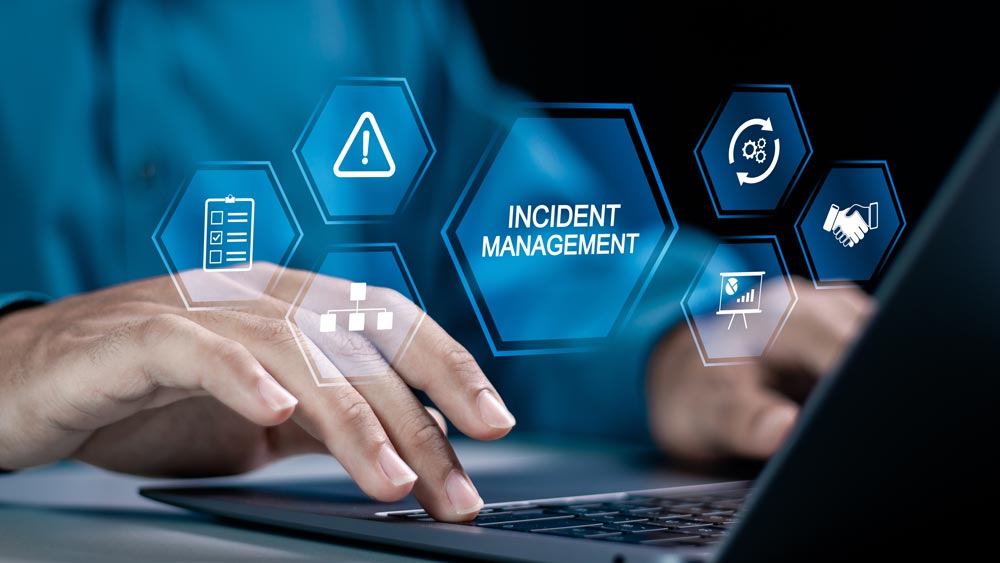Why Small Businesses Can’t Skip Detection and Response Anymore
Modern security isn’t just about preventing fires; it’s about knowing when one has started.
For years, most small businesses built their cybersecurity plans around one idea: prevention. Keep the bad guys away, and you’ll stay safe.
That’s still true. Good prevention is the foundation of every secure environment. But focusing only on prevention made sense when tools that could detect or respond to active threats were too expensive or complicated to set up.
But that’s changed. Those tools are now accessible, affordable and, frankly, essential.
Today’s attacks move faster, spread wider and hide better than ever. Modern protection means pairing prevention with detection and response, which are the systems that alert you when something starts to burn and help contain it before it spreads.
Ignoring them now is like saying, “I don’t need a smoke alarm. If there’s a fire, I’ll just rebuild the house.”
The NIST Five Pillars
The NIST Cybersecurity Framework is the foundation many organizations use to manage cybersecurity risk. It’s built around five pillars:
- Identify: Know what’s at risk.
- Protect: Put barriers in place to prevent attacks.
- Detect: Recognize when something’s going wrong.
- Respond: Take action to contain or stop the damage.
- Recover: Restore operations and learn from the event.
If you’re a small business decision maker, you probably don’t want a Ph.D. in cybersecurity. You just want to make good decisions.
The truth is, cybersecurity language and analogies overlap constantly. You’ve probably heard all the castle, moat and lock examples before. They make security sound simple, like all you need to do is build a taller wall or buy a better lock, and your organization will be secure.
But when every vendor uses the same vocabulary, it’s easy to lose track of what actually matters. You can end up thinking you already have something covered because the next thing sounds almost identical to what you’ve already bought.
That’s why we like the NIST five pillars. They give you the right level of visibility: high enough to see the big picture, but not so high that everything blurs together. It helps you understand where each piece of security fits, and why it matters, without getting lost in the weeds.
How Small Businesses Used to Approach Security
In the past, most small organizations skipped straight from protect to recover. They locked the doors (firewalls, antivirus, phishing training) and bought insurance (backups and recovery plans). That seemed like enough.
The goal of small business cybersecurity hasn’t changed, but the accessibility of detection and response tools has. They’ve reached a point where every small business can and should include them in their security strategy.
If something bad happened, they’d just restore from backup and move on.
Meanwhile, the middle layers of detect and respond were seen as luxuries: nice to have, but too expensive or complicated for a small IT budget.
Why That Approach Falls Short
Here’s the problem: prevention alone doesn’t account for what happens while the fire is still burning.
Without detection and response tools, an attacker could spend days or weeks inside your environment without being noticed. By the time you smell smoke, the kitchen is already gone.
Backups will help you rebuild, but why plan for the most expensive, most disruptive recovery plan as your only line of defense?
The Modern Approach
Modern cybersecurity is about the speed of awareness.
Detection and response tools give small businesses the same kind of early-warning systems large enterprises have had for years. They monitor your environment for unusual activity, alert you when something starts to heat up and help isolate the problem before it spreads.
It’s not about replacing your prevention tools or backups. It’s about comprehensive security that covers you from all angles.
Why This Shift Is Happening Now
For a long time, active detection and response were out of reach for smaller organizations. They required enterprise budgets and dedicated security teams. That’s no longer true.
Today, MDR and similar tools are financially viable for small businesses. They’re automated, scalable and designed for organizations that don’t have full-time security staff.
The goal of small business cybersecurity hasn’t changed, but the accessibility of detection and response tools has. They’ve reached a point where every small business can and should include them in their security strategy.
The Takeaway
Prevention is still important, and so are backups. But if that’s all you have, you’re missing the systems that warn you when something’s going wrong.
In 2025, a responsible cybersecurity posture means locking your doors, installing smoke alarms and knowing who to call when one goes off.
Protect Your Organization with a Complete Defense
Modern threats move fast. Your defenses should too. If you’re still relying only on prevention and recovery, it’s time to fill in the middle with tools that detect and respond.
Let’s talk about building your complete defense. Contact Hungerford to schedule a consultation or learn how managed detection and response can fit into your existing security framework.
Stay updated! Get tips and insights delivered to your inbox weekly by subscribing to our newsletter.











